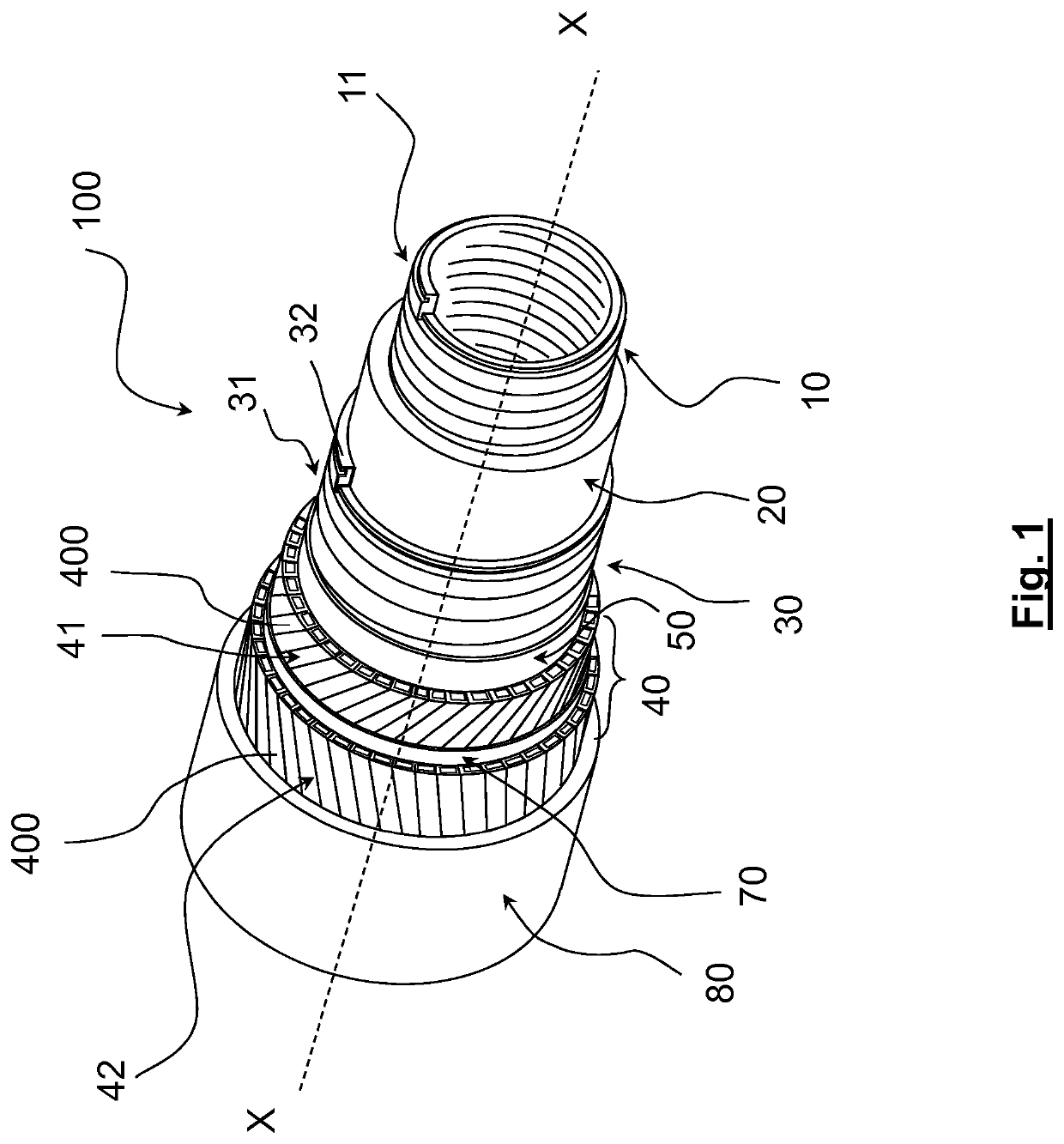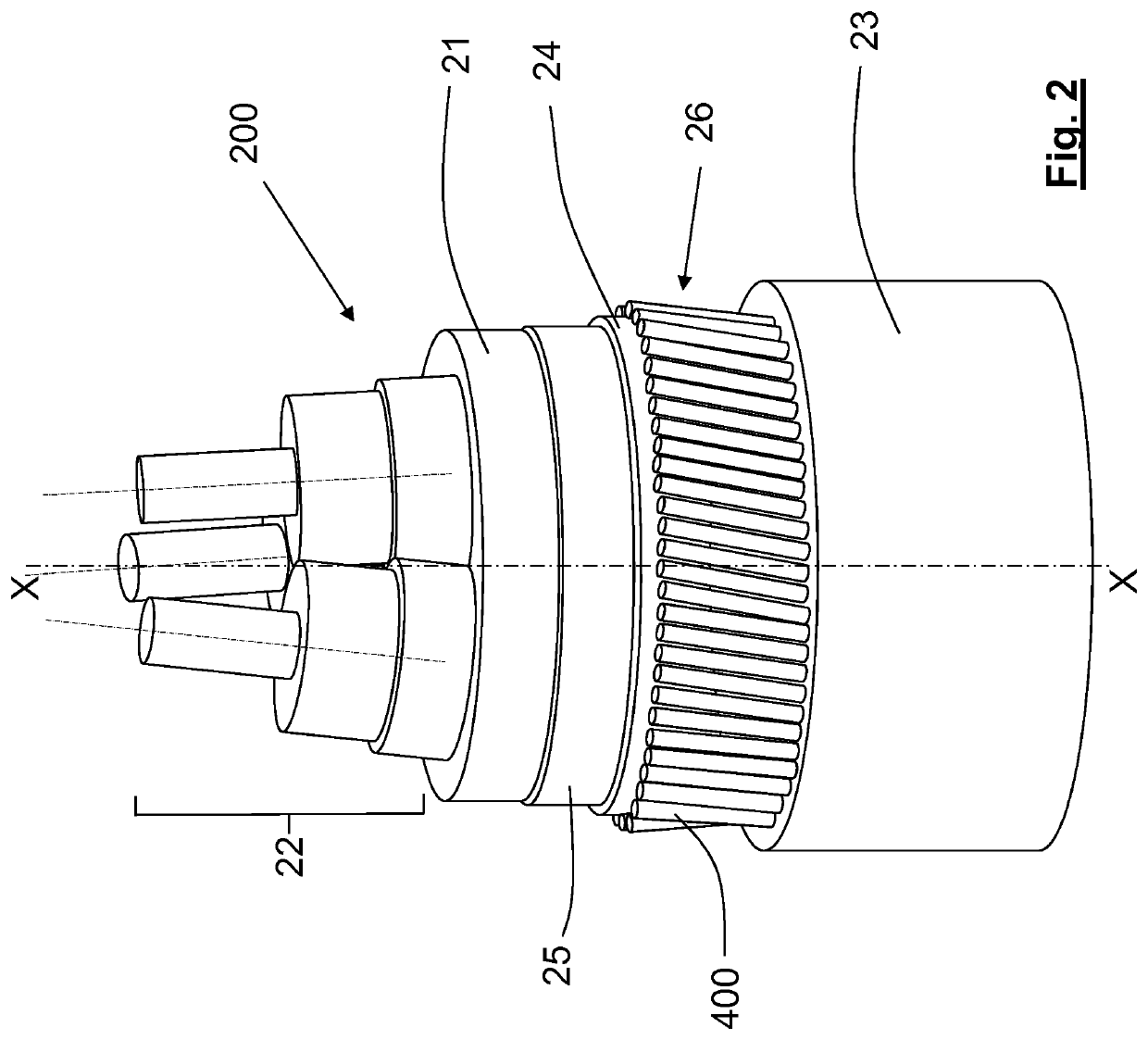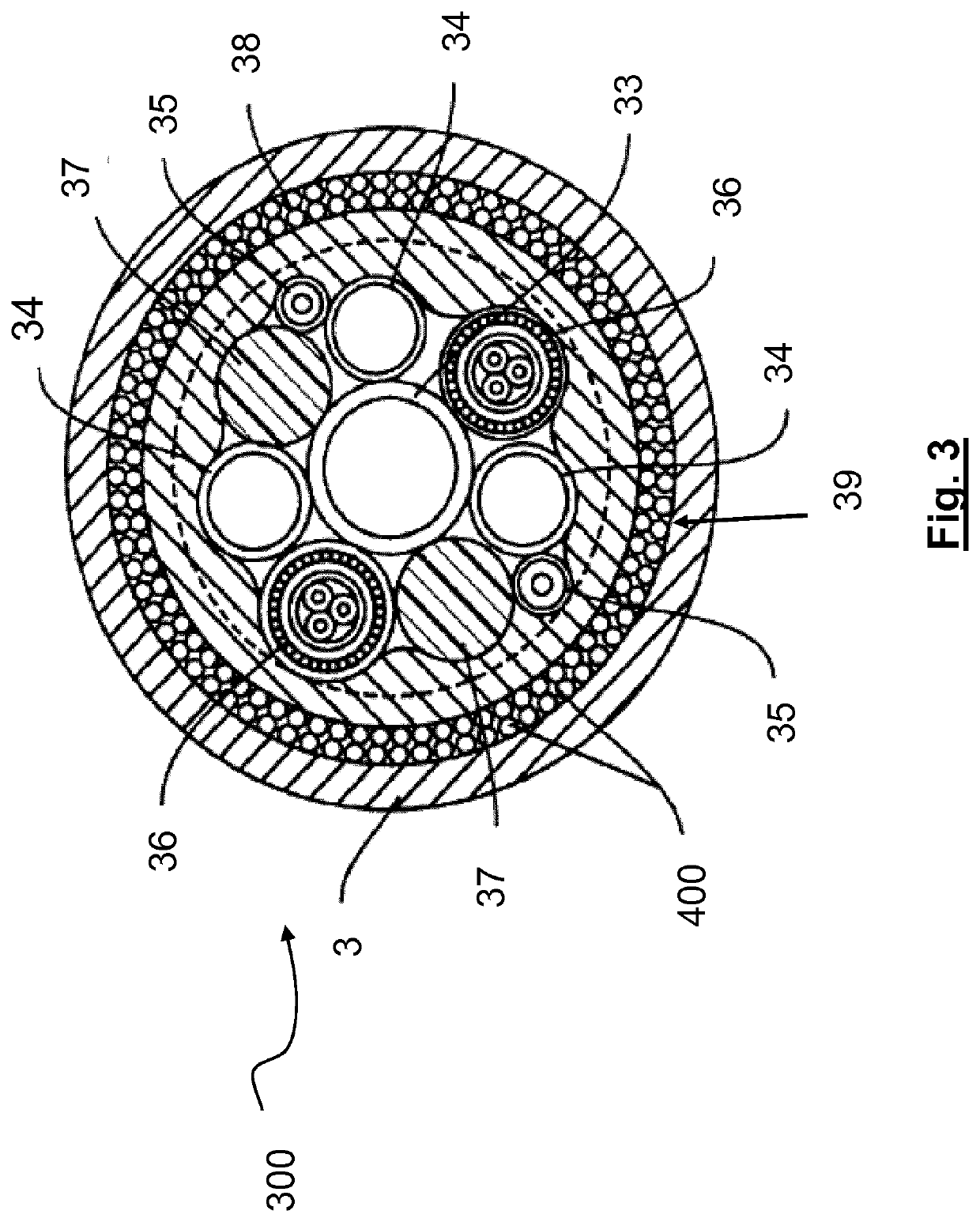Cable or flexible pipe with improved tensile elements
a flexible pipe and tensile element technology, applied in the direction of cables, elevators, insulated conductors, etc., can solve the problems of heavy cable, weak gripping force of the payoff system, and substantial cable elongation, so as to reduce weight, increase the strength of a tensile element, and reduce the effect of functionality
- Summary
- Abstract
- Description
- Claims
- Application Information
AI Technical Summary
Benefits of technology
Problems solved by technology
Method used
Image
Examples
example 1
[0083]An elongated tensile element (reference element) made of steel only has been taken as comparative element. This tensile element has a substantially rectangular cross section with dimensions of 2 mm×7 mm, an elastic modulus of 191 GPa and a density of 7.8 g / cm3.
[0084]When a length of 1,430 m of this all steel elongated tensile element was suspended vertically, its own weight (156 kg) caused an elongation of the steel tensile element itself of 0.05%.
[0085]A first elongated tensile element according to embodiments of the present invention has been tested. This tensile element had a substantially rectangular cross section and dimensions of 2 mm×7 mm, a core made of epoxy resin reinforced with carbon fibres having an elastic modulus of 150 GPa and a density of 1.6 g / cm3, and steel sheath having an elastic modulus of 191 GPa and a density of 7.8 g / cm3. The core had a substantially rectangular cross section with dimensions of 0.75 mm×6 mm, and it was totally covered by the steel slee...
example 2
[0094]Elongated tensile elements comprising a fibre reinforced polymeric composite core, a metal sheath totally covering the composite core, a substantially rectangular cross section and dimensions of 2 mm×7 mm were bent for obtaining a deformation with a final bending diameter of 60 mm at most.
[0095]The strain applied to each element took into account the elongation at break. Such strain was significantly lower than the fibre elongation at break to preserve the integrity of the elongated element core.
TABLE 2Fibre elasticApplied strainFinalCompositeCore sizemodulusSteel(bendingbendingNo.fibres(mm)(GPa)%radius)radius1Carbon0.5 × 615078.51.2%27.1mm(20.8 mm)2Carbon0.75 × 6 150681.7%29.6mm(22.1 mm)3Carbon 1 × 6150571.7%45.1mm(29.4 mm)4Aramid0.5 × 610078.51.2%27mm(20.8 mm)5Aramid 1 × 6100572.3%29.4mm(21.7 mm)6Glass 1 × 670572.3%28.9mm(21.7 mm)7Glass1.5 × 670362.8%42.7mm(26.8 mm)
[0096]Among the elongated tensile elements tested, No. 3 and No. 7 could not be bent with a final bending diame...
PUM
| Property | Measurement | Unit |
|---|---|---|
| elastic modulus | aaaaa | aaaaa |
| elastic modulus | aaaaa | aaaaa |
| elongation | aaaaa | aaaaa |
Abstract
Description
Claims
Application Information
 Login to View More
Login to View More - R&D
- Intellectual Property
- Life Sciences
- Materials
- Tech Scout
- Unparalleled Data Quality
- Higher Quality Content
- 60% Fewer Hallucinations
Browse by: Latest US Patents, China's latest patents, Technical Efficacy Thesaurus, Application Domain, Technology Topic, Popular Technical Reports.
© 2025 PatSnap. All rights reserved.Legal|Privacy policy|Modern Slavery Act Transparency Statement|Sitemap|About US| Contact US: help@patsnap.com



